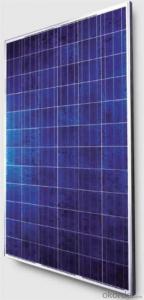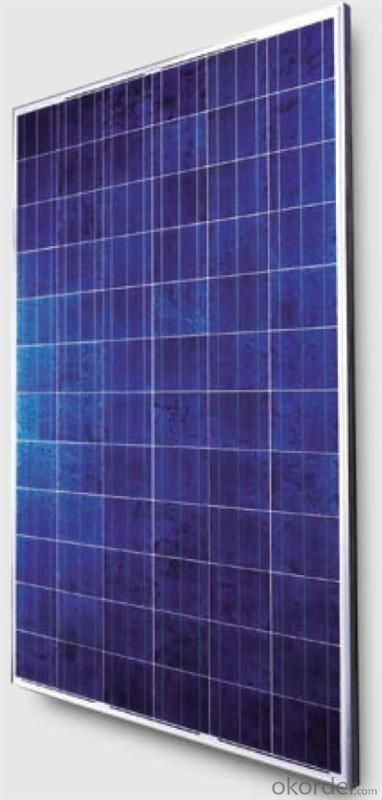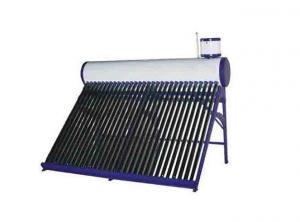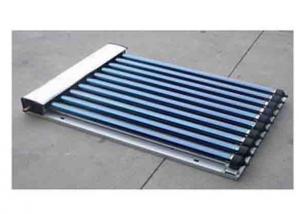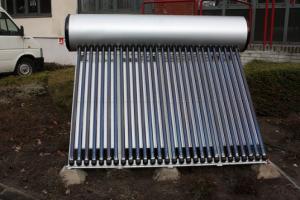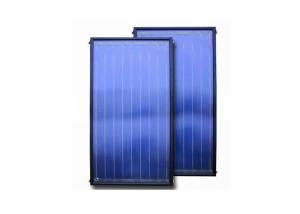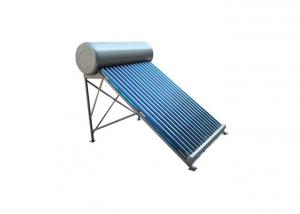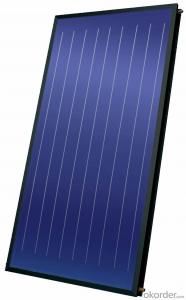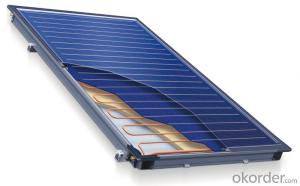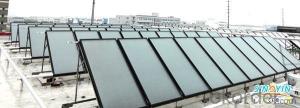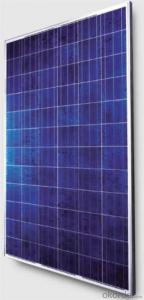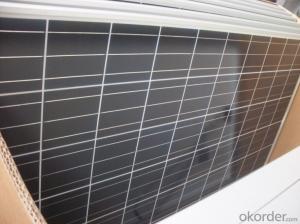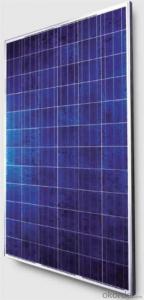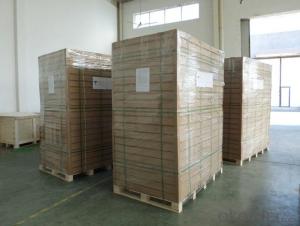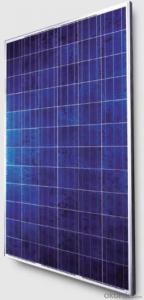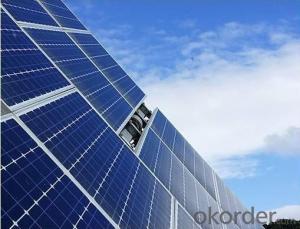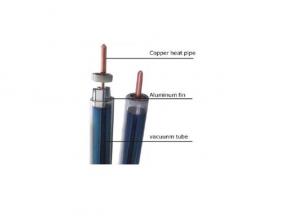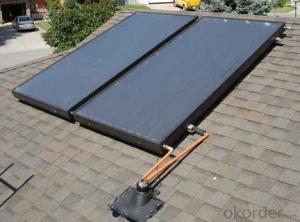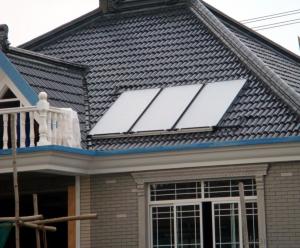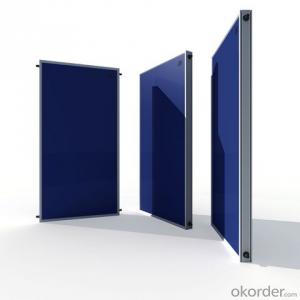Flexible Solar Collectors - CNBM Brand Silicon Modules Made in China
- Loading Port:
- Tianjin
- Payment Terms:
- TT OR LC
- Min Order Qty:
- 1 pallet
- Supply Capability:
- 100000000 pallet/month
OKorder Service Pledge
OKorder Financial Service
You Might Also Like
Solar modules use light energy (photons) from the sun to generate electricity through the photovoltaic effect. The majority of modules use wafer-based crystalline silicon cells or thin-film cells based on cadmium telluride or silicon. The structural (load carrying) member of a module can either be the top layer or the back layer. Cells must also be protected from mechanical damage and moisture. Most solar modules are rigid, but semi-flexible ones are available, based on thin-film cells.
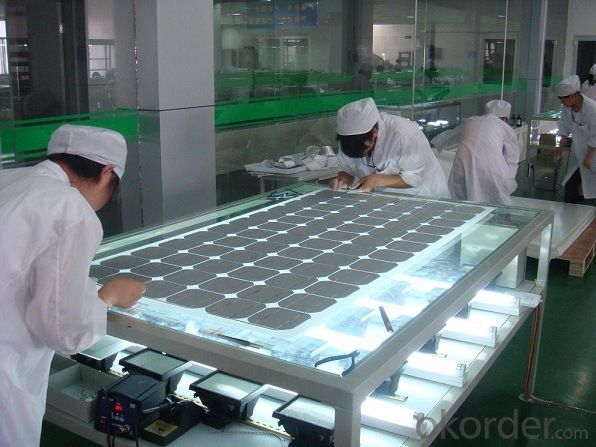
Specifications:
solar panels from 5W--300W, made of TAIWAN MOTECH brand cells,with CO in TAIWAN,Mono and Poly with VDE,IEC,CSA,UL,CE,ISO.
We import solar cells from Taiwan Motech brand, with this CO in taiwan and our CSA certification,we can still sell goods to Anti-dumping areas like USA. Our main products are solar panels, off grid and on grid solar home systems , solar street lighting systems, solar water heating system,solar pump,solar attic fan, solar DC LED lights and solar DC refrigerators.
Certificates : ISO, CE, VDE IEC, MCS, CSA-UL, CEC.
Delivery time: sample 10days, order 25-30days.
Sample: charged.
Payment term: T/T 30% as deposit, 70% before shipment. Or irrevocable L/C at sight.
Trade term: FOB Shenzhen or CIF destination seaport or Airport.
Characteristics:
I.Solar Cell : High efficiency crystalline solar cell. Even if under the weak light, the solar module can produce maximum power output.
II.Tempered glass (toughened glass): Anti-reflecting coating and high transmission rate glass increase the power output and mechanical strength of solar module.
III.EVA and TPT: Using high quality EVA and TPT to prevent destroying and water.
IV.AI frame: Without screw, corner connection. 6 holes on the frame can be installed easily.
V.Junction box: Multi function junction box with water proof.
VI.Long lifetime: ≥25 years; Less power decrease.
VII.Good performance of preventing from atrocious weather such as wind and hails.
VIII.Resisting moisture and etching effectively, not effected by geology.
IX.The certificate issued by international authority: UL, TUV, IEC, VDE, CE.
Quality and Safety
1. Rigorous quality control meets the highest international standards.
2. High-transmissivity low-iron tempered glass, strong aluminium frame.
3. Using UV-resistant silicon.
4. IS09001/14001/CE/TUV/UL
Warranties
1. 10 years limited product warranty
2. 15 years at 90% of the minimal rated power output
3. 25 years at 80% of the minimal rated power output
Technical date :
ITEM NO.: | Poly 156*156 cell ,60pcs . Power range from 230Wp-260Wp | ||||||
Maximum Power(W) | 230 | 235 | 240 | 245 | 250 | 255 | 260 |
Optimum Power Voltage(Vmp) | 29.4 | 29.5 | 29.7 | 30.1 | 30.3 | 30.5 | 30.7 |
Optimum Operatige Current(Imp) | 7.83 | 7.97 | 8.08 | 8.14 | 8.25 | 8.37 | 8.48 |
Open Circuit Voltage(Voc) | 36.7 | 36.8 | 36.9 | 37.1 | 37.3 | 37.5 | 37.7 |
Short Circuit Current(Isc) | 8.52 | 8.59 | 8.62 | 8.65 | 8.69 | 8.73 | 8.78 |
Solar Cell: | 156*156 Poly | ||||||
Number of Cell(pcs) | 6*10 | ||||||
Name of Solar Cells | Polycrystalline Cell | ||||||
Size of Module(mm) | 1650*992*40/45/50 | ||||||
Cable & Connector Type | Pass the TUV Certificate | ||||||
Frame(Material Corners,etc.) | Aluminium-alloy | ||||||
Back sheet | TPT | ||||||
Weight Per Piece(KG) | 19.5KG | ||||||
FF (%) | 70-76% | ||||||
Junction Box Type | Pass the TUV Certificate | ||||||
Tolerance Wattage(e.g.+/-5%) | ±3%, or 0-3% | ||||||
Front Glass Thickness(mm) | 3.2 | ||||||
Temperature Coefficients of Isc(%) | +0.04 | ||||||
Temperature Coefficients of Voc(%) | -0.38 | ||||||
Temperature Coefficients of Pm(%) | -0.47 | ||||||
Temperature Coefficients of Im(%) | +0.04 | ||||||
Temperature Coefficients of Vm(%) | -0.38 | ||||||
Temperature Range | -40°C to +85°C | ||||||
Surface Maximum Load Capacity | 5400Pa | ||||||
Allowable Hail Load | 23m/s ,7.53g | ||||||
Bypass Diode Rating(A) | 12 | ||||||
Warranty | 90% of 10 years, 80% of 25 years. | ||||||
Standard Test Conditions | AM1.5 1000W/ 25 +/-2°C | ||||||
Packing | carton or pallet | ||||||
1*20' | 14 Pallets / 316pcs | ||||||
1*40'STD | 25 Pallets / 700pcs | ||||||
FAQ:
I..Will you focus on the safety of the goods during transportation?
Yes, Safety of the cargo is the primary element that we would consider on transportation.
II..How would guarantee the quality will meet the requirements of your clients?
Before shipment, we will have inspection for each batch of goods.
III..What certificates do you have?
IEC,UL,TUV,CSA,etc.
IV..Can you do OEM according to clients’ requirements?
Yes, we have our own brand while we can provide OEM service.
- Q: Are there any limitations to the angle of installation for solar collectors?
- Solar collectors have certain limitations regarding their installation angle. The most suitable angle for solar collectors depends on the latitude of the installation site and the specific time of the year. Generally, it is recommended to install solar collectors at an angle that maximizes their exposure to sunlight throughout the entire year. In regions situated closer to the equator, where the sun remains high in the sky throughout the year, solar collectors are typically installed at a steeper angle, typically around 30 to 40 degrees. This allows them to absorb the maximum amount of solar radiation during daylight hours. On the other hand, in areas located farther from the equator, where the sun's angle varies significantly throughout the year, solar collectors are often installed at a shallower angle. This helps to optimize the absorption of solar energy, especially during the winter months when the sun is lower in the sky. Nevertheless, there are limitations to the installation angle. If the angle is too steep or too shallow, it can lead to reduced energy production. Steeper angles may cause snow or debris to accumulate on the solar panels, thereby reducing their efficiency. Conversely, shallower angles may result in lower absorption of solar radiation, particularly during the winter season. Various factors, such as space limitations, structural restrictions, and aesthetic considerations, can also impose restrictions on the installation angle. In certain cases, the angle may need to be adjusted to accommodate these factors, even if it is not the optimal angle for maximum energy production. In conclusion, while there are limitations to the installation angle of solar collectors, careful consideration of the location, time of year, and other relevant factors can help ensure the highest possible energy production and efficiency.
- Q: Can solar collectors be used for heating residential care facilities?
- Yes, solar collectors can be used for heating residential care facilities. Solar thermal systems can efficiently capture and convert sunlight into heat energy, which can then be used for space heating and hot water in residential care facilities. This renewable energy source can help reduce heating costs and greenhouse gas emissions, making it an environmentally-friendly and sustainable solution for heating these facilities.
- Q: How do solar collectors affect water conservation?
- There are various ways in which solar collectors can positively impact water conservation. To begin with, the utilization of the sun's energy by solar collectors for heating water reduces the need for traditional water heating methods, which typically consume large quantities of water. Consequently, less water needs to be extracted from natural sources like rivers, lakes, or underground aquifers. Furthermore, solar collectors often incorporate closed-loop systems that recycle and reuse heated water. This enables the stored water to be used multiple times, thereby decreasing overall water consumption. This is especially advantageous in regions where water scarcity is a pressing concern. Moreover, solar collectors can be combined with other water conservation techniques, such as rainwater harvesting. By collecting rainwater and utilizing solar collectors to heat it, the demand for potable water in activities like irrigation or washing can be minimized, thus conserving water resources. Additionally, solar collectors can play a crucial role in the desalination process, converting seawater into fresh water. This is particularly valuable in coastal areas where freshwater resources are limited. By utilizing solar energy to power the desalination process, less energy is required from conventional sources like fossil fuels, resulting in reduced water consumption and environmental impact. In conclusion, solar collectors contribute to water conservation through the reduction of reliance on water-intensive heating methods, the reuse of heated water, the integration with rainwater harvesting, and the facilitation of seawater desalination. These sustainable practices aid in the preservation of water resources and promote a more efficient and environmentally friendly use of water.
- Q: Can solar collectors be used for industrial process heat?
- Yes, solar collectors can be used for industrial process heat. Solar thermal systems, such as concentrating solar power (CSP) or solar water heaters, can capture and convert sunlight into thermal energy, which can then be utilized for various industrial processes. These collectors can provide a cost-effective and sustainable alternative to traditional fossil fuel-based heating systems for industrial applications.
- Q: Can solar collectors be used in art installations?
- Yes, solar collectors can be used in art installations. Solar collectors can be integrated into various art forms, such as sculptures, installations, or interactive displays, to harness solar energy and create an eco-friendly and sustainable artwork. This not only adds an innovative and dynamic element to the artwork but also promotes renewable energy and environmental awareness.
- Q: Can solar collectors be used in disaster-resilient infrastructure?
- Yes, solar collectors can be used in disaster-resilient infrastructure. They provide a reliable source of renewable energy that can be utilized even when traditional power sources are disrupted during a disaster. Solar collectors can help power critical infrastructure such as emergency communication systems, lighting, and water pumps, ensuring the continued functioning of essential services in the face of a disaster.
- Q: Are solar collectors suitable for heating greenhouses?
- Yes, solar collectors are suitable for heating greenhouses. They utilize the sun's energy to generate heat, which can effectively warm the greenhouse and create a favorable environment for plant growth. Solar collectors are a sustainable and cost-effective solution for greenhouse heating, as they reduce reliance on fossil fuels and minimize energy costs in the long run.
- Q: Can solar collectors be used for heating rehabilitation centers?
- Yes, solar collectors can be used for heating rehabilitation centers. Solar thermal systems can provide a reliable and sustainable source of heat energy for such facilities, reducing dependence on traditional fossil fuel-based heating systems. This can help in achieving energy efficiency, cost savings, and environmental benefits for rehabilitation centers.
- Q: Are there any financial incentives for installing solar collectors?
- Yes, there are several financial incentives available for installing solar collectors. These incentives vary by country and region but can include tax credits, grants, rebates, and net metering programs. Additionally, installing solar collectors can lead to significant long-term savings on energy bills by reducing reliance on traditional energy sources.
- Q: Can solar collectors be used for heating residential buildings?
- Yes, solar collectors can be used for heating residential buildings. Solar thermal collectors, also known as solar water heaters, can capture the sun's energy and convert it into heat, which can then be used to provide hot water or space heating for residential buildings. By utilizing solar collectors, homeowners can reduce their reliance on traditional heating systems and lower their energy costs while reducing their carbon footprint.
Send your message to us
Flexible Solar Collectors - CNBM Brand Silicon Modules Made in China
- Loading Port:
- Tianjin
- Payment Terms:
- TT OR LC
- Min Order Qty:
- 1 pallet
- Supply Capability:
- 100000000 pallet/month
OKorder Service Pledge
OKorder Financial Service
Similar products
Hot products
Hot Searches
